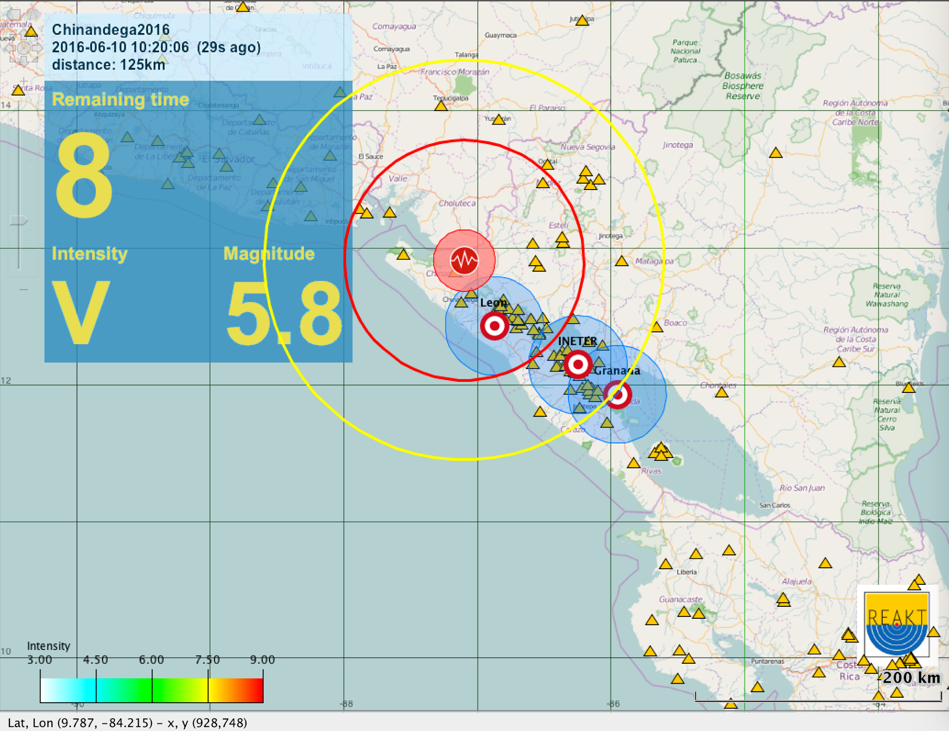2016-07-11
Earthquake Early Warning for Nicaragua
Earthquakes pose a major threat to Central American countries. Large Earthquakes in this region regularly occur offshore along the subduction zone and are prone to trigger tsunamis (such as in 1992 and in 2014), Additionally, shallow crustal earthquakes, occurring onshore, have in the recent past produced heavy damage, such as the magnitude 6.2 earthquake in 1972 that devastated the Nicaraguan capital city Managua.
Read more...The Swiss Seismological Service (SED) has recently begun a project to explore the potential of Earthquake Early Warning (EEW) in Central America. Funded by the Swiss Agency for Development and Cooperation (SDC) at the Federal Department of Foreign Affairs (FDFA), scientists at the SED are working with colleagues at INETER, the agency responsible for monitoring earthquakes in Nicaragua, to build and implement a prototype EEW system. The system will first be deployed in Nicaragua and hopefully extended to cover a wider region in Central America.
At the beginning of June, the SED visited INETER to evaluate the capability for EEW of the local seismic network and installed a first version of the EEW software. Days after, a shallow magnitude 6.3 event occurred on the border with El Salvador that was detected by our system after 29s. Even though, optimisation is required to speed up the system, the infrastructure shows promise. Next steps in the project include continuing analysis of the monitoring infrastructure in the region, and optimisiation of the EEW algorithms, in particular testing their suitability to operate in this challenging location, with seismicity from deep offshore as well as volcanic sources.
